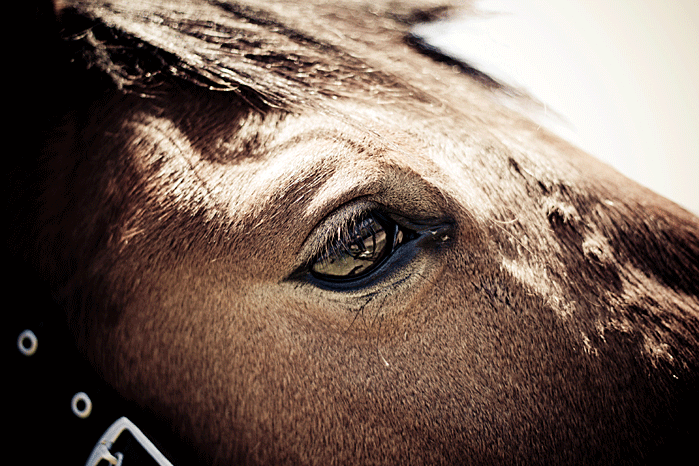| Recognize the symptoms and know what to do |
“We’re having a heat wave, a tropical heat wave, the temperature’s rising, it isn’t surprising …” that your equine might be suffering from heat stress. Just as we need to keep ourselves well hydrated and cool, we also need to care for our equines in the same manner. When it’s hot or humid outside, even a regular day can seem all the more intense.
The physical signs of heat stress are easily recognizable. When you observe the symptoms, you should promptly react and then contact your veterinarian for follow-up, or if you don’t notice a marked improvement within at least 10 minutes of treatment. The four following steps are immediate reactions, which are effective in keeping your horse cool and should be utilized in any or all scenarios listed below:
1) Provide immediate rest and shade, preferably with a breeze
2) Provide cool water
3) Hose down or sponge bath with cold water
4) Then promptly call your vet
Profuse Sweating and Dehydration – Untreated and prolonged profuse sweating over the entire body can lead to dehydration. Increased water is another way to counter this symptom. If not treated immediately, a cessation of sweat will follow, which is a dangerous sign of heat stroke. By pinching the skin on your horse’s neck, you can observe if the skin bounces back when released or remains pinched to indicate whether your horse is dehydrated. To relieve this, give your horse rest and cool water to drink.
Rapid Respiratory Rate and Elevated Heart Rate – An equine with rapid or labored breathing, more than 40 breaths per minute, is becoming overheated and needs a rest. For the heart, anything over 60 beats per minute is a physical sign that your horse is trying to cool down. Again, cease your activity and lead your horse to the shade to hose down and offer water.
Elevated Temperature, Lethargy, and Discolored Mucous Membranes – A rectal temperature that is higher than 102 degrees Fahrenheit for a prolonged length of time is indicative of heat stress. Lethargy also is a severe symptom and blood pooling in the gums is a sign of the circulatory system shutting down from the heat. Remove your horse’s tack and follow all the steps in cooling down your horse.
Heat stress also trigger a horse to “tie up” while exercising. Dr. Andy Bennett of Polk Equine explains, “Most horses that ‘tie up’ act real crampy, so it’s important to give IV fluids and muscle relaxers, as well as taking some blood work. Usually a shot of Banamine helps also.”
Preventative measures of heat stress are simple and as easy as adjusting your summer routine with your equine. During the summer months, increase the water provisions and consider providing a salt-mineral brick or add electrolytes to your horse’s water, especially in the days preceding a performance, event, or intense workout. Consider riding earlier in the day or later in the evening to avoid activity during the hottest part of the day. For mid-day activities, be sure to make advanced preparations in keeping your horse cool. Provide plenty of water, electrolyte additives, and frequent refreshing breaks. Minimize the use of tack, saddle pads, leg boots, and other miscellaneous tack. You should never leave your horse in the trailer for a prolonged length of time or without air conditioning. Be sure that the stables and your horse’s stall are well ventilated with easily accessible water.
Following these guidelines and preventative measures is one informative way you can stave off heat stress and keep your equine healthy and cool during the summer heat wave.
CREDIT
article by J.P. SMITH

